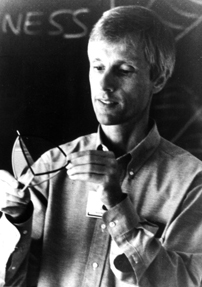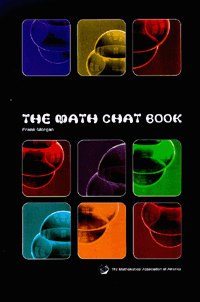- About MAA
- Membership
- MAA Publications
- Periodicals
- Blogs
- MAA Book Series
- MAA Press (an imprint of the AMS)
- MAA Notes
- MAA Reviews
- Mathematical Communication
- Information for Libraries
- Author Resources
- Advertise with MAA
- Meetings
- Competitions
- Programs
- Communities
- MAA Sections
- SIGMAA
- MAA Connect
- Students
- MAA Awards
- Awards Booklets
- Writing Awards
- Teaching Awards
- Service Awards
- Research Awards
- Lecture Awards
- Putnam Competition Individual and Team Winners
- D. E. Shaw Group AMC 8 Awards & Certificates
- Maryam Mirzakhani AMC 10 A Awards & Certificates
- Two Sigma AMC 10 B Awards & Certificates
- Jane Street AMC 12 A Awards & Certificates
- Akamai AMC 12 B Awards & Certificates
- High School Teachers
- News
You are here
Frank Morgan's Math Chat - Fractional Magic Square
 |
 |
September 6, 2001
Math Chat wishes all students and teachers a happy and satisfying new academic year.
Old Challenge: (National Public Radio Weekend Edition Puzzle 7/29/01). Complete the following to a magic square, in which each column, each row, and both diagonals sum to 1.
|
Answer:
|
Sudipta Das of Calcutta, India and R. Weirauch use the fact (proved by Weirauch and early the next morning by my house guest and college roommate Randy Kimble) that the center entry must be the average value of 1/3, as you might expect. (All columns, rows, and diagonals sum to 1.) It is now easy to fill in the rest. The middle left entry must be 5/12, then the bottom left entry must be 5/24, and so on.
Here is Weirauch's proof that the center entry equals 1/3. Consider a square
|
Adding both diagonals plus the middle row yields
3 = (a + e + i) + (c + e + g) + (d + e + f) = 3e + (a + d + g) + (c + f + i) = 3e + 2.
Therefore 3e = 1 and e = 1/3.
Toby Gottfried, Joseph Fine, Arthur Pasternak, and Weirauch note that you can start with the standard magic square
|
add 3 to all entries to make the upper left 1.5 times the middle right
|
and then divide by 24 to make the sums 1 to recover the same answer
|
Eric Brahinsky, Martin Cohen, and Nicholas Yukic of Moravian Academy High School find the general solution when the two given entries are a and b instead of 3/8 and 1/4:
|
Weirauch notes that the September NCTM journal, Mathematics Teacher, has an interesting article, "The Most Magical of All Magic Squares," by Frank J. Swetz.
Martin Gardner's excellent new collection, "Gardner's Workout," includes shortest networks on rectangles of points and, in the humor section, this suggested method for divisibility by 7: "Write the number in base 7 and see if the last digit is 0." (Of course writing a number in base 7 already involves all the work of checking for divisibility and more.)
Questionable Mathematics. Brennie Morgan spotted this sign on papayas at the Allentown Farmers' Market:
PAPAYAS: 49 cents apiece - 2 for $1.00
She asked about it and was told: "We don't want to bother with the pennies"!
Readers are invited to submit more examples of questionable mathematics.
Bridge. In the September 2001 Bridge Bulletin of the American Contract Bridge League (www.acbl.org), Betty Moore asks for the probability in a bridge deal that each of the four hands has a void in a different suit.
New Challenge. High school seniors will soon be applying to colleges. Can you think of a better way to match up students and colleges?
Copyright 2001, Frank Morgan.
Send answers, comments, and new questions by email to Frank.Morgan@williams.edu, to be eligible for Flatland and other book awards. Winning answers will appear in the next Math Chat. Math Chat appears on the first and third Thursdays of each month. Prof. Morgan's homepage is at www.williams.edu/Mathematics/fmorgan.
THE MATH CHAT BOOK, including a $1000 Math Chat Book QUEST, questions and answers, and a list of past challenge winners, is now available from the MAA (800-331-1622).




